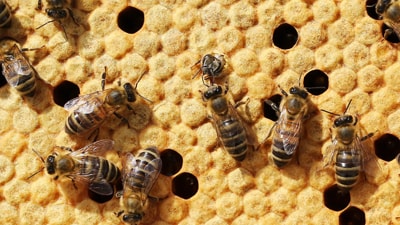New Book Links Political Buzz With Honeybees’ Search for New Hive
By Leigh Kish / 412-268-2902 / lkish@andrew.cmu.eduWhen it’s time to move their hives, honeybees are able to quickly identify a high-quality nesting site without approval from the king or queen bee.
Carnegie Mellon University economist and complexity theorist John H. Miller argues that there are lessons to be learned by understanding how bees in a hive, and a variety of other systems, interact.
“The U.S. political primary system has similar features,” explained Miller, professor of economics and social science in the Dietrich College’s Social and Decision Sciences Department. “Different candidates rise and fall over time and, in theory, more attention and evaluation is paid to the more promising candidates.”

When honeybees search for a new hive, scout bees leave the swarm and identify potential sites. The returning scout bees perform a waggle dance to advertise the location of the new site to other scout bees. Scout bees that find better locations dance for longer periods of time, and thus a positive feedback loop emerges in the system. Eventually, when a sufficient quorum of scouts forms at the new location, the swarm moves to its new home. All of this occurs without any central direction.
Miller details the link between honeybees and the U.S. primary system, and provides many more examples, in a recently authored popular science book, titled “A Crude Look at the Whole: The Science of Complex Systems in Business, Life and Society,” published by Basic Books. A review of the book in the journal “Nature,” which also included the book in its top five science picks of the week on Jan. 20, 2016, called it a “succinct, elegant study of systems thinking.”
The traditional scientific approach to understanding the world has been reductionism — the idea that understanding simple parts can lead to an understanding of the whole. But, Miller’s interest in complex systems “came from the realization that even if we understand the parts, we may not understand the whole that is created when those parts interact with one another.”
The idea of complex systems isn’t a new one. In 1776, economist Adam Smith wrote about the now-famous “invisible hand” that guides individuals following their self-interest toward decisions that benefit society as a whole. Using recent advances in computation and methods, new research is finally making Smith’s ideas far more visible.
“Taking an exact look at a small piece of the world,” said Miller, “may not give us sufficient insights to understand topics like consciousness, climate change, financial collapse, or terrorism. We need to take a crude look at the whole to really understand, and hopefully change for the better, these important parts of our world.”